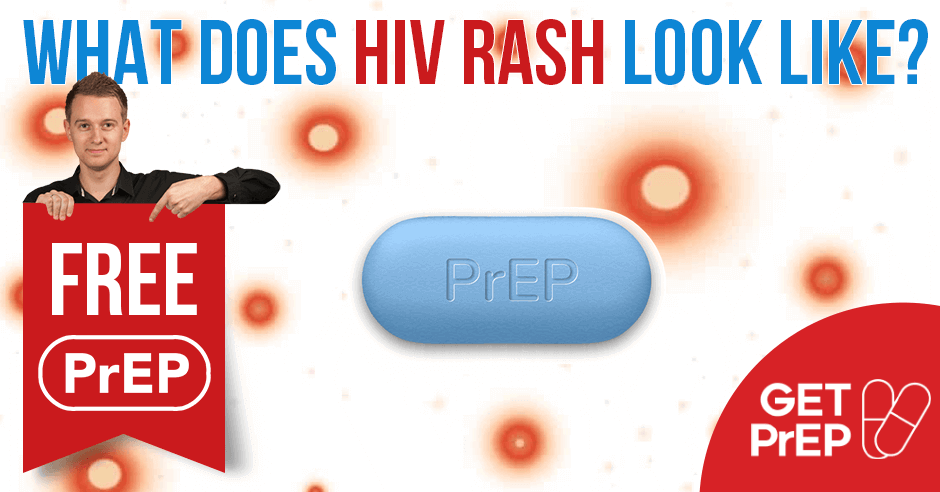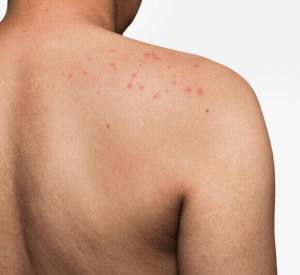Rash is a skin irritation, a typical body reaction to any disease, infection, or allergic condition. In addition, it can be an initial symptom of HIV. However, it is not sufficient evidence to state that someone has got this virus for sure. The most important thing is to know its peculiarities and to tell it from other possible skin issues.
The natural ability to combat infections is reduced, and such people are open to a great number of rash types and other skin problems.
What Does HIV Rash Look Like?
There is no specific rash that determines HIV or is associated with this infection for sure. Even if a person develops some kind of rash, a blood test is compulsory to confirm that it is HIV.
The HIV rash looks like small spots or dots and resembles eczema. It is reddish in patients with light skin and black or dark purple in patients with dark skin.
Identify Early Signs: HIV Rash vs Normal Rash
The rash may occur at any stage of the disease, but typically, it happens within the first weeks after getting the virus. Compared vs normal rash, HIV rash is accompanied by flu-like symptoms (sore throat, fatigue, headaches, fever, etc.). Medical professionals call this process seroconversion. Within this period, the virus quickly multiplies, and the body starts producing antibodies to fight off the infection. People may have a burning feeling on their skin. The rash is red and flat and is usually spread on the back and chest. It tends to go away in 3 weeks or in a month.
Where Does It Appear?
A rash is one of the primary signs of acute HIV infection and may develop like a mononucleosis disease. Its features may look similar to any other viral infection. The exanthema can occur on any part of the body, but usually it affects the upper trunk. It is distributed on shoulders, torso, face, and head, and may involve feet and palms of the hands. The patient’s skin is covered with red bumps. The rash resolves in a couple of weeks.
This illness may cause mouth or palatal ulcers, as well. Some patients may have trouble in swallowing because of esophageal ulcers caused by the virus.
Causes of HIV Rash
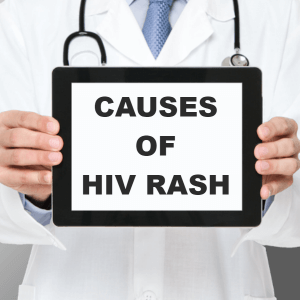
- due to adverse effects to HIV medications;
- because of chronic infections which weaken the immune system;
- due to HIV infection.
A skin rash may also occur due to less dangerous facts, like allergic reactions. People in doubt should visit a physician and get tested, because the identification of the rash cause is of primary importance. The doctors will examine its location, symmetry, and distribution to determine the genuine cause of the rash outbreak.
HIV Medication Side Effects
Patients can develop a rash as an allergic reaction to HIV medication treatment, which includes antibiotics and antiretrovirals. Almost 90% of HIV-positive people experience some kind of skin issue, and drug hypersensitivity can be one of its causes. This adverse reaction to the pills is called “drug eruption.”
Therapists differentiate between three main classes of medicines, which are able to cause rash in patients:
- nucleoside reverse transcriptase inhibitors (Ziagen, etc.);
- non-nucleoside reverse transcriptase inhibitors (Viramune, etc.);
- protease inhibitors (Agenerase, Aptivus, etc.).
The rash outbreak takes many forms. It can be maculopapular with red patches covered with small bumps, which exude. It appears on the trunk and then spreads to the neck and limbs.
The drug side effect is accompanied by swollen glands, fever, muscle aches, exhaustion, vomiting, stomach discomfort, nausea, swelling of the tongue or face, and breathing problems.
Typically, a rash is found in 1-2 weeks after patients have initiated their primary treatment, and it terminates in a couple of weeks if there are no complications.
An allergy to HIV drugs may also trigger severe diseases, like Steven-Johnson syndrome or toxic epidermal necrolysis. They show up in the following symptoms:
- blisters in mucous areas (eyes, mouth, and genitals);
- red spots with blisters on the skin;
- peeling skin;
- headache and fever.
Both illnesses affect a third of the body and should be immediately treated.
HIV Infection Signs
As the HIV infection goes on, the functioning of the immune system diminishes. Allergic reactions on the skin are a typical sign of a progressing illness. The rash severity varies for each individual. In some patients, it covers large body areas, others may have only minor spots. The rash is red and very itchy. This rash outbreak found after a recent viral infection is called acute retroviral syndrome.
The rash occurs on the upper part of the trunk, like shoulders, face, forehead, chest, forearms, and hands. It is accompanied by the symptoms of a regular flu and can be mistaken for some other ailment. Other symptoms include sore throat, fatigue, headaches, diarrhea, swollen lymph nodes and more.
All infected persons share similar symptoms, but female patients may have different HIV signs compared to men. Some women may also get menstrual pain, cramps, vaginal yeast infection, mood swings, loss of appetite, etc. Only blood tests are able to identify the virus.
After these symptoms have gone, HIV-positive people may not notice any other signs until later. It is important to get diagnosed in time and to begin immediate treatment if the diagnosis is confirmed.
HIV rash is not transmitted to other people and bears no risk of spreading the virus.
Other Infections
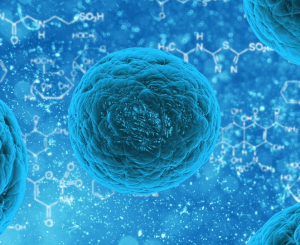
- the bacteria staphylococcus. It may cause skin rash. Some of these bacteria may be resistant to antibiotics;
- cellulitis. This infection occurs in the deepest skin layers and causes tissue pain and swelling. It spreads very quickly and is accompanied by fever. The disease starts with a small cut or nick, which leads to rash and inflamed skin. The affected limbs may become big and immobile;
- herpes. This virus causes painful blisters on the mouth (lips) and/or genitals (penis). This infection can lead to severe shingles, which look like a stripe of blisters;
- molluscum contagiosum. This disease shows up as small skin-colored warts. They don’t hurt, but have a tendency to get worse. They are found throughout the body. Infected people may have an outbreak of a hundred bumps. It is contagious and is spread to other people by touching;
- folliculitis. By this condition, hair follicles get infected. It occurs on shaved body areas, like the face or legs. It looks like red bumps filled with pus. The bumps may resemble pimples with ingrown hair;
- dermatitis. This disorder may appear in various forms, but seborrheic dermatitis is the most common one in those with HIV. It causes an itchy rash of mild redness in the form of scaly plaques, which are spread over the chest, face, groin, arms, elbows, scalp, inner thighs, and under knees, mostly affecting oilier skin parts. In severe cases, it may cause pimples on the face, nose, behind or inside the ears;
- psoriasis. This ailment resembles dermatitis, but the patches don’t itch;
- scabies. This disease is caused by a mite that burrows into the skin. It is manifested by red itchy bumps and is highly contagious;
- ringworm. HIV-positive people may also develop this fungal infection;
- Kaposi’s sarcoma. This is the type of skin cancer that appears as dark spots on the skin of either brown or purple color.
These infections bring more complications and are harder to cure in patients with HIV. It is necessary to begin therapy as soon as possible and include antiviral meds, pain relievers, and other treatment that will help to boost the immune system.
How Long Does It Last?
HIV rash is usually found in newly infected individuals several weeks after the virus is contracted. Its outlook depends on the kind of rash, general patient’s health, HIV drug use, and other factors.
There is no specific time frame for the rash to go away, as well as to determine the beginning and duration of the disease. As a rule, a rash tends to disappear on its own in 2-3 weeks.
Rashes usually come and go, but those that are related to chronic conditions (psoriasis, herpes, etc.), tend to progress without special treatment. As the immune system is getting weaker because of the virus, rashes may return (for example, cellulitis usually recurs). Patients who have had one kind of rash may get a different kind later.
How to Treat HIV Rash Properly?
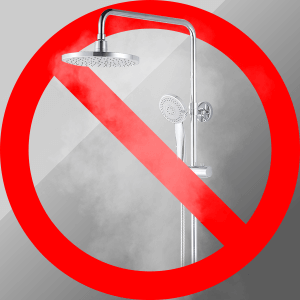
Depending on the cause of the rash, health care providers usually prescribe oral antihistamines and topical steroid creams along with antiretroviral therapy. It helps to diminish rash and relieve pain and itching.
As an addition to symptomatic treatment, a few simple lifestyle changes will help to cope with rash outbreaks and lessen skin problems:
- avoid hot baths and showers, opt for cold water to prevent irritation;
- wear cotton clothes and avoid non-breathable fibers, which cause sweating;
- use mild detergents to prevent allergy;
- apply allergy creams, natural moisturizers, soothing lotions or oils to keep the skin hydrated;
- switch to baby soap or herbal body wash;
- buy an air-humidifier to avoid skin dryness;
- avoid extreme cold, direct sunlight, and heat, which make the rash worse;
- watch your condition while eating new food or starting new pills;
- skip products that contain aggressive chemicals.
If people notice an unknown rash and have potential risks to contract the virus, they have to get immediately tested. They can order an online kit for testing or visit their GP.
HIV-negative people who have greater risks of getting the infection should take meds for pre-exposure prophylaxis (PrEP). These drugs don’t allow the virus to establish a permanent infection. In combination with condoms and other prevention therapies, PrEP is a great tool, which provides 92% protection.
By taking a pill every day, people can control their HIV status and have round-the-clock defense from being infected. Surf the website of BuyPrEPOnline to know the main characteristics of these drugs. Choose the appropriate tablets according to the given description and information from a great variety of medicines offered by this pharmacy.
These tablets can be taken by both men and women who have sex with new partners of unknown HIV status. The pills also relieve stress and anxiety associated with sex. Approved by the FDA and recommended by the WHO, PrEP medicines show great results and prevent the virus from spreading.

